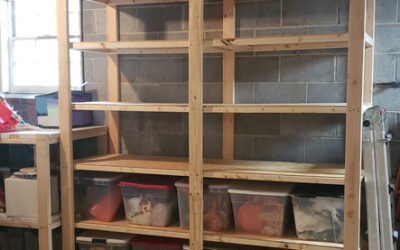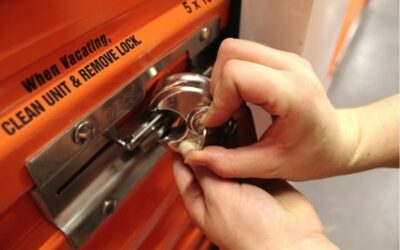It’s a typical Saturday, and you’re knee-deep in your child’s room, in what could only be described as a sea of tiny clothes, well-loved toys and countless drawings. Every corner is infused with memories and you have to decide their fate. Now, shift the scene. You’re in your own room, holding onto concert tickets from a decade ago and letters from old friends. The question still stands: What do you keep and how can you best organize and preserve your sentimental items?
You don’t just want to declutter your kid’s bedroom or clear space, you want to know how to store keepsakes so that all these sentimental objects can be safe from the wear and tear of time. This will make revisiting them a joy, not a chore. But where do you start? Is the attic good enough or do you need to rent a climate-controlled self-storage unit? Would any cardboard box do or do you need a special case?
Let’s explore these questions on memorabilia storage and find together ways to preserve the past while embracing the present.
Sentimental Objects to Preserve and Store
First things first, let’s see what qualifies as a keepsake. It might seem simple at first glance, but it all changes when you start sifting through your belongings. For parents, keepsakes often revolve around their children’s milestones and memories. But sentimental objects aren’t just child’s play. It’s all those unique items that might not mean much to anyone else but are priceless to you:
- Personal letters that hold deep conversations and connections.
- Important documents that mark significant life events — NOT birth certificates and the like, which should go in a fireproof safe.
- Jewelry, especially family heirlooms.
- Clothes that remind you of special occasions.
- Signed books and other special gifts that remind you of the giver.
- Unique collectibles you’ve gathered from your travels.
Kids’ Special Memories
Every crayon stroke on a piece of paper, each tiny onesie and those countless “firsts” captured in objects around your home — they’re the chapters of your child’s growing-up story. Keeping these sentimental objects means holding onto those fleeting moments.
The trick is not letting keepsakes take over your space. Be selective, keeping those items that truly spark joy and memories. As your child grows, some things might lose their sentimental value, and that’s okay. It’s all part of making room for new memories.
1. Artwork and School Papers
Kids create a lot of art and bring home many school papers. You can’t keep them all, but how do you choose? Well, think about the pieces that make you smile the most. It could be their first “family” drawing or a proud project from school.
Put school papers in a dedicated file storage box, neatly labeled and tucked away.
For artwork, consider digital archiving. Apps such as Keepy and Artkive make it easy to photograph artwork, store the files digitally, and then print out display books to store memories without all the clutter.
2. Clothes and Fabric Memories
Baby clothes are hard to part with, right? Those tiny shirts and bibs bring back a wave of memories. But instead of a box in the attic, why not turn them into something you can see and use? Memory quilts are perfect for this.
Got other special garments that you want to keep whole? Maybe it’s their first Halloween costume, their first Christmas outfit or their first school uniform. Label them with index cards, marking the date or age and a few extra relevant details, and put them in a regular storage box.
3. Toys and Treasures
You may have different toy storage solutions in place, but you won’t keep every toy forever, only those few that mean the world to your child, like their favorite stuffed animal. Just add some medals, their favorite books and their first sippy cup, and you’ve got yourself a pretty full Miscellaneous box. Put it somewhere accessible, so that every now and then, you can take a trip down memory lane together.
Pictures, Pictures, Pictures
Every photo tells a story. That laugh at a family reunion, your grandpa’s wise smile or your first bike ride. Photos freeze these moments and take us back, letting us relive and share those special times. Keeping them safe means keeping those moments alive.
| Best storage methods | Acid-free albums and archival boxes | Store physical photos in acid-free albums to prevent them from yellowing over time. Use archival boxes for added protection, especially for vintage or irreplaceable photos. |
| Digitization | Scan photos to create digital backups. Keep these digital copies on hard drives or cloud storage as a safeguard against physical damage or loss. | |
| Best storage solution | Climate-controlled storage | Store photos in environments where temperature and humidity are regulated. Also, keep photos away from direct sunlight to prevent fading. |
Find Climate-Controlled Storage
Jewelry and Other Family Heirloom Items
Whether it’s your great-grandma’s brooch or a value piece of artwork, these items are tangible connections to your family’s past. Plus, they can hold significant monetary value.
Same as for photos, your best bet would be to keep jewelry and heirlooms in a stable environment where temperature and humidity don’t fluctuate. This can be a secure climate-controlled storage unit, a safety deposit box at a bank or an interior room in your house — definitely not the attic, basement or garage.
Get specialized jewelry boxes and glass cases for display. The former often have compartments and fabric lining to protect each item, while the latter allow you to showcase special pieces while keeping them safe.
Since different materials need different care, keep silver, gold and gemstones in separate compartments to prevent scratching and tarnishing. Gold pieces are more malleable, hence they can be easily damaged, while silver items fare best in an anti-tarnish pouch or wrapped in polish cloth. You can also store them in zipper plastic baggies as long as you throw in some anti-tarnish strips as well.
Clothes That Hold Meaning
Full of memories, personal stories and even bits of fashion history, clothes can truly go beyond fabric and thread. Maybe it’s your first pair of heels, your wedding dress, a grandparent’s favorite hat or a concert t-shirt with your favorite band. Whether you want to revisit their stories from time to time or pass them down to future generations, carve a special place for them in your memorabilia storage.
Now, before storing, make sure each item is clean, as stains and dirt can become permanent over time. All good? Let’s see how to store sentimental items you once wore. Here are your top options:
- Airtight containers or cedar chests. Great for long-term storage, they protect clothes from moisture and pests. On the flip side, they’re bulky.
- Vacuum-sealed bags. Ideal for saving space, they can also leave clothes wrinkled, so pick what goes in them wisely.
- Temperature-controlled closets. If storing items in your home, just choose a closet in an interior room where temperature and humidity stay constant.
Pro Tip: Use garment bags and acid-free tissue paper for added protection, especially for delicate fabrics.
Now You Know How to Store Sentimental Items
We’ve talked a lot about sentimental objects and how to store keepsakes, from kids’ drawings to grandma’s jewelry, and it all boils down to one thing: these items are special. That’s because they remind you of people, places and moments that matter, and preserving them lets you hold onto a piece of your history.
Of course, picking the right way to store each item, like using digital backups for photos or special bags for clothes, makes a big difference. The one between tidying up your child’s room and keeping your stories alive — for you and maybe even for those who come after you. So, why not start today? Sort through those boxes, scan those old photos and enjoy the trip down memory lane.


